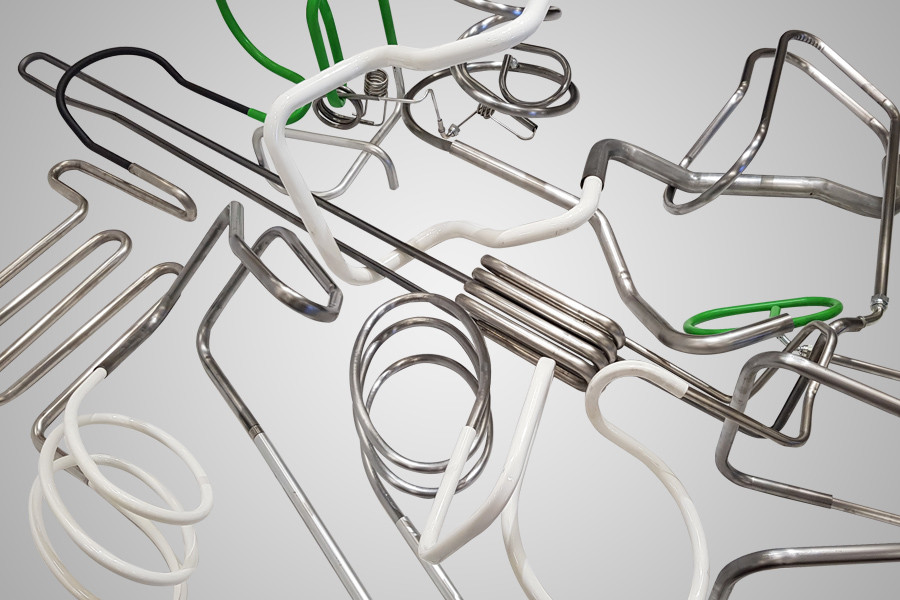
This is the first of a three-part blog series that explores how different materials behave during the cold deformation tube bending process. Each material has its own characteristics, specific strengths and weaknesses and its own problems and critical issues when bending.
Common steel - Iron
Iron is the most commonly used material in the mechanical field. It is cheap, strong and easy to find. It is used in almost all sectors. From the structural sector (light and heavy carpentry), to furniture, the automotive industry, agriculture and many more.
Iron is selected for its excellent qualities of:
- Mechanical resistance
- Good deformability
- Low cost
- Constancy and repeatability of its mechanical characteristics (above all, its elongation and spring back).
Round bending
Bending iron pipes is a very common and relatively simple operation. This said, it is necessary to know when and how to use the following components:
- Plug and ball mandrels
- Wiper die
- Rollers
- Pressure die
Tubular bending
The following forms can all be bent:
- Round tubes and pipes
- Square or rectangular tubulars
- Other shapes
In contrast, bending square and rectangular tubulars presents particular challenges. Tubulars tend to swell during bending which makes it difficult to extract the curved tube from the bend die. One solution is to use openable bend dies. There are a number of tricks of the trade for this problem but it is crucial to have a clear understanding of when these can be used.
Repeatability and maximized production
It critical to take into account that pipes and tubes are almost always welded. This can affect the the bend. If precise repeatability in the pieces is required then a system for automatic recognition of the weld orientation can be installed. This takes full advantage of the automated loading systems to produce uniform parts quickly.





